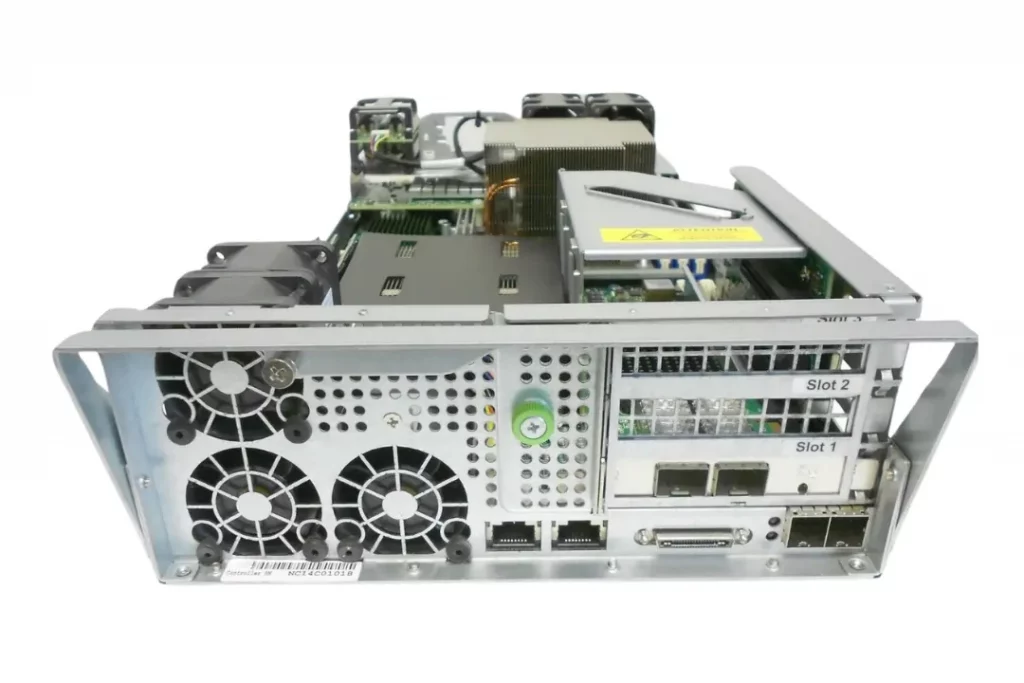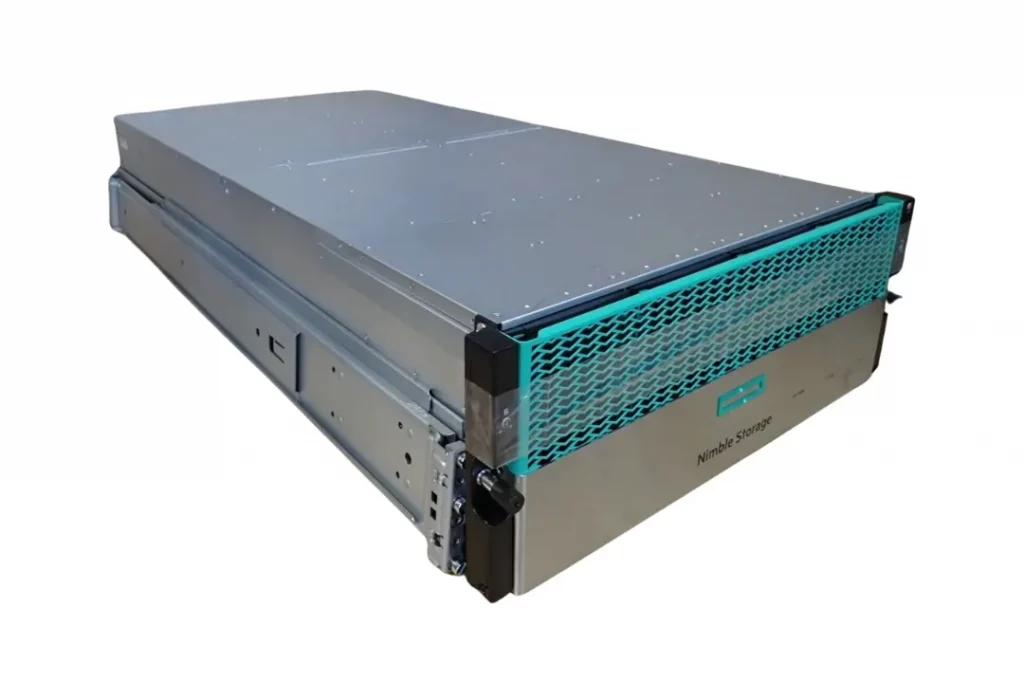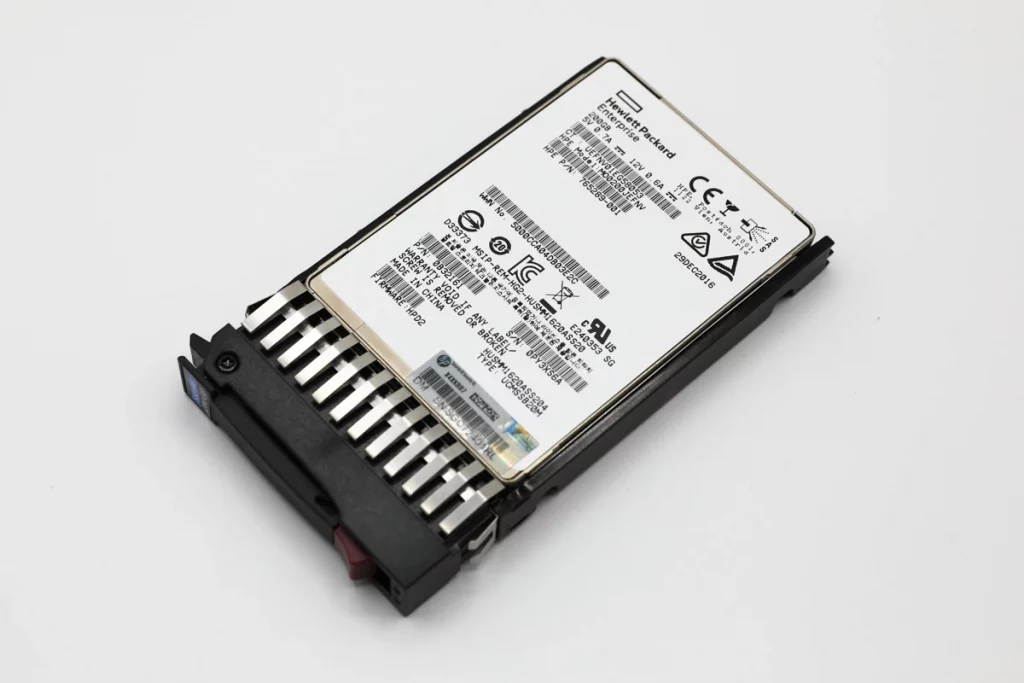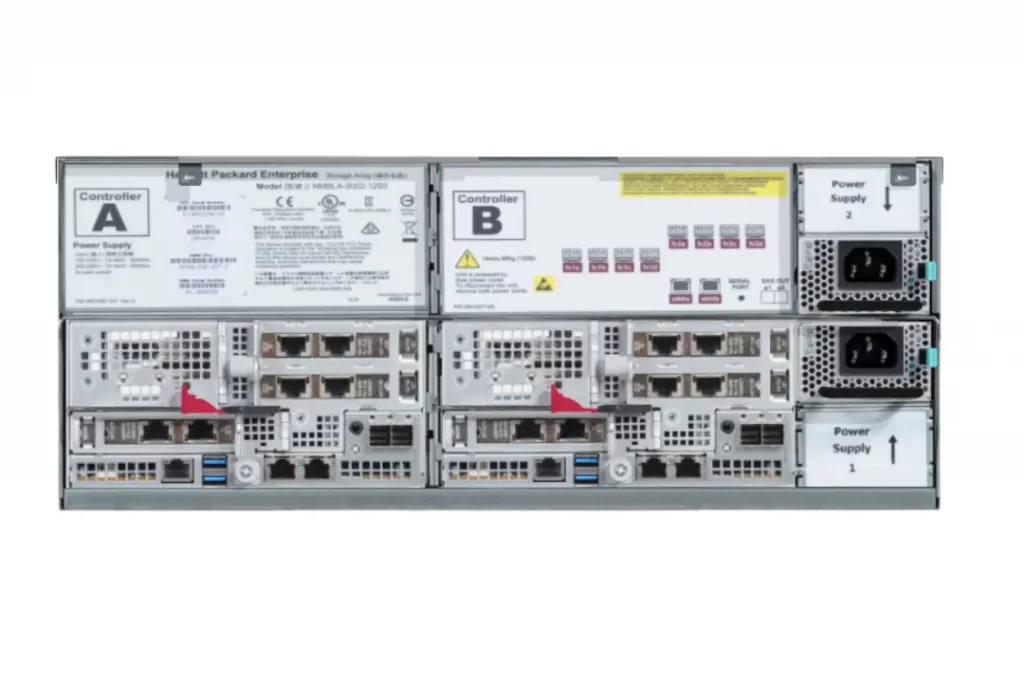The security and reliability of storage systems are very important. However, even the most advanced systems can experience unforeseen failures, leading to potential data loss. We faced such a scenario recently. A customer’s HPE Nimble Storage device, an advanced storage unit, experienced a critical failure. Equipped with iSCSI volumes and integrated into a Windows Server 2016 environment, this device experienced severe ReFS (Resilient File System) corruption due to incorrect write operations.
In this blog post, we will examine the intricacies of our laboratory’s successful data recovery mission from this broken device, providing information about the resilience of modern file systems and the importance of robust data recovery strategies.
Background of the Corruption
Our client faced a critical situation and contacted us for help. According to the customer, improper writes during the crash caused massive data loss, rendering the device and operating system inoperable. This incident threatened the integrity of extensive data stored within the system, particularly critical Veeam backup data, the loss of which significantly disrupted customer business continuity.
The client needed an emergency data recovery service. Therefore, we asked our customer to send the device to our laboratory immediately for a thorough examination and immediate data recovery.
Initial Assessment
Upon receiving the failed HPE Nimble Storage unit, our team initiated a comprehensive assessment. We first analyzed the ReFS metadata, which was severely corrupted due to the unfortunate incident. We identified this as the primary cause of the system failure and subsequent data inaccessibility.
The storage configuration of the device consisted of HPE Nimble Storage with iSCSI volumes linked to a Windows Server 2016. The HP SAS hard drives were responsible for data storage, while SSDs were used for caching.
Furthermore, the HPE Nimble device had the deduplication feature enabled, indicating that this may have compounded the extent of the data loss. The assessment revealed that the corruption was extensive, impacting a significant amount of critical data.

Challenges of HPE Nimble Recovery:
- Corrupted ReFS File System: The primary challenge was the corruption of the ReFS file system, which housed critical backup data.
- Operating System Crash: The crash exacerbated the situation, making accessing and recovering the stored data difficult.
- Deduplication Complexity: The deduplication feature on the HPE Nimble Storage added complexity to the recovery process, requiring careful handling to ensure data integrity.
Hardware Verification
Before initiating the data recovery process, ensuring the integrity of the HP SAS hard drives and SSDs was paramount. Our team performed meticulous testing of each hardware component to confirm its operational status, including rigorous checks with diagnostic tools and direct communication with the drives. This was an essential step to eliminate the possibility of hardware failure contributing to corruption or a potential barrier to the data recovery process.
In this process, we checked each HP SAS hard drive and SSD individually for signs of physical damage, read/write errors, and indications of malfunction. Our team also inspected the iSCSI volumes and the status of their connecting cables. Our comprehensive hardware verification ensured that faulty hardware would not hinder the data recovery process. These efforts allowed us to focus solely on the corrupted ReFS file system for recovery, providing the highest chance of retrieving the critical data.
File System Reconstruction
We began the reconstruction process of the file system with sophisticated data recovery tools specifically designed for the ReFS file system. Our team initiated a comprehensive scan to identify the extent of file corruption and locate backup copies of the metadata. With this metadata, we rebuilt the ReFS file system bit by bit, restoring the integrity of the corrupted files. This painstaking process involved mapping file fragments, repairing the damaged index nodes, and fixing inconsistencies due to improper write operations.

During the reconstruction process, our team ensured that the resilience feature of the ReFS file system was leveraged to its full potential. We methodically addressed each file system sector, restoring as much data as possible and ensuring its integrity.
As a result, we reconstructed the corrupted file system, yielding a successful recovery of the critical Veeam backup data. This process reaffirmed the importance of a robust data recovery strategy and the resilience of modern file systems like ReFS.
Our professionals reconstructed the corrupted ReFS file system through specialized tools and techniques. This step involved meticulously piecing together the fragmented file system and addressing inconsistencies resulting from the incorrect write operations.
Data Extraction
The data extraction task commenced after successfully reconstructing the corrupted ReFS file system. Our team employed specialized recovery tools for large-scale data retrieval from complex file systems. This process focused primarily on extracting the Veeam backup data, constituting roughly 90TB of the device’s total 120TB storage capacity. Understanding the critical nature of this data, our team prioritized the extraction process to salvage as much information as possible.
The data extraction process was meticulous and intensive, requiring careful navigation through the patchwork of recovered data.
Our team systematically filtered through the volumes of fragmented and unstructured data, focusing on the most critical pieces of information that held the highest value for our client. We not only aimed to recover the vast quantity of stored data but also endeavored to maintain its integrity, ensuring that the extracted files were usable and reliable.

The result was a successful extraction of the critical Veeam backup data, thereby mitigating the potential consequences of this unfortunate data loss incident.
Deduplication Handling
Handling deduplicated data presented a unique challenge. Despite the increased storage efficiency, the deduplication added a layer of complexity to the recovery task. However, our team skillfully managed this issue using intricate, specialized tools to reconstruct the original files carefully.
Our systematic approach focused on maintaining the data’s consistency, integrity, and usability. This time-intensive process required a deep understanding of the deduplication operations performed by the HPE Nimble storage device. Still, our experienced team successfully navigated this task, recovering the original data without compromising its quality or reliability.
Operating System Restoration
Restoring the Windows Server 2016 operating system to a stable state was crucial for facilitating further data retrieval. Our team embarked on this task after successfully extracting the Veeam backup data. We intended to restore the operating system to its proper functional state, thus ensuring the server’s smooth operation in the future.
We utilized our in-depth knowledge of Windows Server platforms and advanced recovery tools to complete the restoration effectively. The process included restoring system files, stabilizing the operating system, and ensuring seamless integration with the recovered data. This step marked the final stage in our comprehensive recovery process, leaving the server ready for future use.
Data Verification and Backup Restoration
After completing the data extraction and operating system restoration, our team conducted a thorough verification process to ensure the integrity and usability of the recovered data. We employed various techniques, including checksum validation and manual file inspection, to verify that the extracted data was identical to the original files on the HPE Nimble storage device.

Once satisfied with the verification process’s results, we restored the backed-up Veeam data to the storage device. Our team carefully migrated the recovered data to the HPE Nimble storage device, ensuring its integrity and reliability for future use.
Results
Our comprehensive recovery process successfully recovered approximately 90TB of Veeam backup data from the server’s total 120TB storage capacity.
We achieved this through meticulous reconstruction of the ReFS file system, which allowed for the extraction and retrieval of the critical data. The process required specialized tools and techniques to preserve the recovered files’ integrity and reliability. Following this, the HPE Nimble Storage unit was restored to operational status.
Conclusion - Professional HPE Recovery
In conclusion, through a meticulous and robust procedure, our team was able to restore a significant amount of critical data and return the HPE Nimble Storage device to its operational state. We demonstrated the resilience of modern file systems and the invaluable impact of a comprehensive recovery strategy. Our endeavours underscore the undeniable significance of business data recovery services in preventing critical data loss and maintaining business continuity.
When faced with complex RAID recovery challenges, our expertise in restoring various storage devices, including the HPE Nimble Storage unit, makes RAID Recovery Services a reliable choice.
Don’t hesitate to reach out if you encounter any data recovery needs, especially for HPE Nimble Storage. Contact RAID Recovery Services today and let our experts provide rapid, reliable, and efficient data recovery solutions.
Frequently Asked Questions
What is a ReFS file system?
ReFS stands for Resilient File System. It is a Microsoft proprietary file system introduced with Windows Server 2012.
What is deduplication in data recovery?
Deduplication is a data compression method that eliminates duplicate copies of repeating data, improving storage efficiency.
What is the role of data verification in data recovery?
Data verification ensures the integrity and usability of recovered data. It involves techniques like checksum validation and manual file inspection to ensure the extracted data is identical to the original files.
What is Veeam backup data?
Veeam backup refers to the backup data stored using Veeam software, a single platform for modernizing backup, accelerating hybrid cloud, and securing data.
What is the HPE Nimble Storage unit?
HPE Nimble Storage is an advanced flash storage solution that utilizes predictive technology. It offers speedy and dependable data access, specifically designed for storing data in the cloud.
Why should I choose RAID Recovery Services?
RAID Recovery Services has a team of experienced professionals specializing in recovering data from various storage devices, including HPE Nimble Storage. Our comprehensive and systematic approach ensures the integrity and reliability of the recovered data.